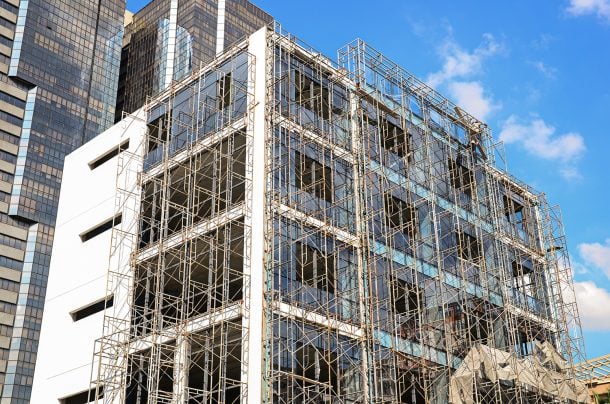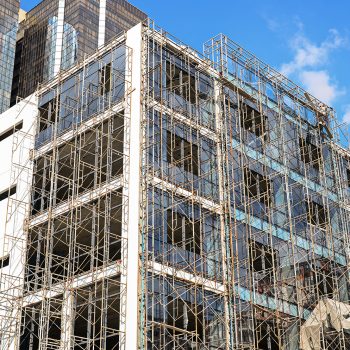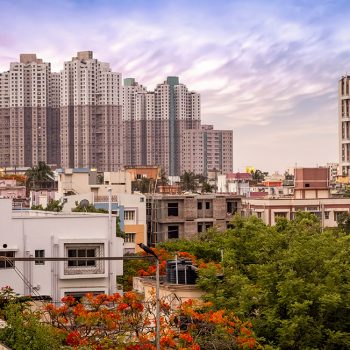Time matters with India’s Real Estate revitalisation
KPMG reported last month that Indian Real Estate Sector has now entered a “revitalisation mode”, with aggregate growth projected to reach $ 650 Billion by 2025 and topping $850 Billion by 2028: the average yearly contribution of real estate to the Indian economy will more than double from its current 7% by 2025. And CBRE India are equally optimistic: in their own quarterly report, snappily titled “India Real Estate: Variance in Construction Costs”, they forecast 17 Million new jobs will be added to the sector and an additional 8.2 Billion square feet of space released by 2025. It all resonates well with the ambitions objectives of Prime Minister Modi’s Affordable Housing Programme, with Real Estate now set firmly in growth mode, and growing stronger every year. But there’s a dark shadow in the garden…
Each of these influential reports has highlighted a potential issue relating to construction costs on the subcontinent, capable of acting as a brake on growth and with no less than six major conurbations (Chennai, Pune, Hyderabad, Mumbai and Delhi) causing particular concern. Perhaps predictably, Mumbai tops the list of areas where unit construction costs have spiralled over recent years and show little sign of slowing down despite the broadly stabilizing effect of GST legislation introduced by the Modi Administration which helped smooth out some of the worst supply and pricing differentials across the country.
The average cost of construction for a residential apartment in Mumbai is now Rs 3,125 per square foot, compared to the Rs 2,375 per square foot the same apartment will cost in Hyderabad. At one (macro) level the reason for all this is obvious: an increasingly urbanised population pushing up demand for units in the largest conurbations as part of a gradual drift away from the land, but the disparity in relative costs between conurbations is still striking. Inter market differentials of this kind are likely to be caused primarily to an uneven distribution of construction skills, with highly skilled workers drawn to areas of greater demand so increasing the unit cost of labour in specific areas of the subcontinent. Certainly we might expect other variables such as recent sharp rises in the wholesale price of steel to be more uniformly spread across the country.
In short, construction is becoming progressively more expensive in the very areas where more housing and commercial units are likely to be needed most…and that’s a real dilemma.
One answer is to make greater use of just in time delivery systems which are capable of dramatically reducing overall construction schedules: simple maths tells us that if an expensive worker is on site for a quarter of the normal building phase, costs will come down no matter how prohibitive the daily rate. And of course we have now grown used to the significance of just in time methodologies because of the prominence the issue has assumed as part of the current Brexit debate. Just as any significant inhibition on frictionless trade has potential to throw the UK economy into chaos after Brexit, so too the same frictionless technologies can help address systemic cost differentials across the Indian construction sector as well.
Modular Construction prefabricates all of the essential components of the building off site, everything from exterior walls, ventilation systems and internal wiring networks with the parts then arriving on location only when they’re needed: meaning field workers aren’t left waiting around (expensively) for the next phase of the project to get underway. Research has shown that through a combination of just in time delivery techniques and modular technology, otherwise complex units such as student accommodation blocks or hospitals can be erected on site in days rather than the months and sometimes years of conventional technologies. And an added advantage is that Modular Technology also reduces the potential for human error and snagging in the final building which can also be a major but hidden expense on any project.
Modulex Construction is the World’s largest and India’s first Steel Modular Building Company, setting out to meet the challenges posed by India’s urban housing shortages in a practical and dynamic manner. The company is at the heart of a project established by Red Ribbon to harness the potential of India’s markets and delivering opportunities for investors. Because, when it comes to investing on the subcontinent, nobody knows India and its markets better than Red Ribbon.
[nectar_btn size="large" open_new_tab="true" button_style="regular" button_color_2="Accent-Color" icon_family="none" url="https://modulexglobal.com/ordinary_shares" text="Invest in Pre-IPO opportunity in Modulex "]
Red Ribbon CEO, Suchit Punnose said:
Prime Minister Modi has successfully appealed to the youthful and increasingly urbanised population that is currently driving India’s economic growth, not least through his Government’s re-energised Affordable Housing Programme the scale and scope of which has at times been breathtaking. So it should come as no surprise to learn that such an increasingly mobile population is also creating real estate hot spots (and cost differentials) through being attracted to a number of specific locations: by definition, a mobile population is difficult to keep still.
So as it seems to me the resulting cost differentials in construction across the subcontinent are likely to be a fact of life for some years to come yet. But that’s certainly not to diminish the problem, and cost disparities are a problem in India’s most expensive real estate markets, Mumbai in particular. They have real potential to distort the market.
In delivering a workable solution to that challenge most expert commentators now agree that Modular Construction is simply inescapable. No other technology offers the pace and scale of delivery needed to meet India’s housing needs and, as the article points out, it is the perfect corollary for just in time delivery systems. That’s why Red Ribbon was committed to Modulex Construction from the very beginning of the project and we remain committed to it today. I’m convinced it is not only a vital element in meeting market challenges but will also deliver on the unprecedented opportunities currently presented by the subcontinent’s burgeoning economy.
[social_buttons full_width_icons="true" facebook="true" twitter="true" google_plus="true" linkedin="true" pinterest="true"]








Leave a Reply